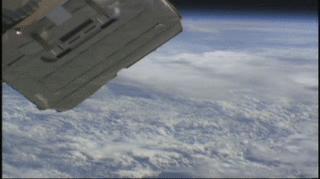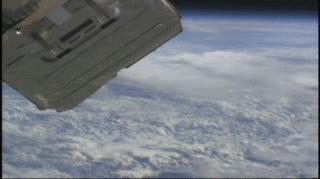
Credit: NASA
For more than a decade, CubeSats, or small satellites, have paved the way to low-Earth orbit for commercial companies, educational institutions, and non-profit organizations. These small satellites offer opportunities to conduct scientific investigations and technology demonstrations in space in such a way that is cost-effective, timely and relatively easy to accomplish.
The cube-shaped satellites measure about four inches on each side, have a volume of about one quart and weigh less than three pounds per unit (U). CubeSats can also be combined and built to standard dimensions of 1U, 2U, 3U, 6U, etc. for configurations about the size of a loaf of bread, large shoebox, microwave, and more.
These small sats are used by scientists and researchers from all over the world as a way to take bold steps when it comes to space science and exploration. Their small size makes it possible to rapidly build and test, making CubeSats an ideal and affordable way to explore new technologies and ideas.
Commercial Entities
CubeSat technology is used by many organizations outside of NASA to explore low-Earth orbit and the effects of microgravity. Together with NASA, companies like Orbital ATK, SpaceX, and NanoRacks give commercial companies the opportunity to fly their CubeSats as auxiliary payloads on cargo resupply missions to the International Space Station. In addition, Rocket Lab and Virgin Galactic will soon provide dedicated CubeSat launches from the new Venture Class Launch Services. CubeSats may be deployed directly from the rocket, from a spacecraft, or from the station itself depending on the mission.
Planet Labs have developed a series of CubeSats to be launched across several expeditions, many of which have been deployed from the International Space Station via the NanoRacks CubeSat Deployer. These Earth-imaging satellites will provide imagery to a variety of users as they focus on highly populated and agricultural areas to study urbanization and deforestation. The images will be used to improve natural disaster relief and crop yields in developing nations.
Educational Institutions and Non-profit Organizations
NASA's CubeSat Launch Initiative provides opportunities for small satellite payloads built by universities, high schools and non-profit organizations to fly on upcoming launches. Through innovative technology partnerships, NASA provides these CubeSat developers a low-cost pathway to conduct scientific investigations and technology demonstrations in space thus enabling students, teachers and faculty to obtain hands-on flight hardware development experience.
Each proposed investigation must demonstrate a benefit to NASA by addressing aspects of science, exploration, technology development, education or operations relevant to NASA's strategic goals. This initiative provides NASA a mechanism for low-cost technology development and scientific research to help bridge strategic knowledge gaps and accelerate flight-qualified technology.
Since its inception CSLI has selected 152 CubeSat missions from 68 universities and in 2015, NASA launched first CubeSat designed and built by elementary students. The recent eighth round of CubeSat selections will include 34 small satellites from 19 states and the District of Columbia to fly as auxiliary payloads aboard missions planned to launch in 2018, 2019 and 2020
Benefits on Earth
CubeSat missions benefit Earth in varying ways. From Earth imaging satellites that help meteorologists to predict storm strengths and direction, to satellites that focus on technology demonstrations to help define what materials and processes yield the most useful resources and function best in a microgravity environment, the variety of science enabled by CubeSats results in diverse benefits and opportunities for discovery.
"You never know what they're going to discover or find," said Susan Mayo, National Lab and Education Specialist for the International Space Station Program Science Office. "What better systems will emerge for Earth imaging? Are we going to develop a better system for doing something? You never know what long-term impact can come out of it. That's what this is all about – how is it going to benefit life on Earth in the end?"
CubeSats are bringing dreams of spaceflight, discovery and science closer to home than ever. For more information about science and research aboard the station, visit ISS Research and Technology.
###
Media Contact
Rachel Hobson
[email protected]
281-244-7449
@NASA_Johnson
http://www.nasa.gov/centers/johnson/home
############
Story Source: Materials provided by Scienmag





